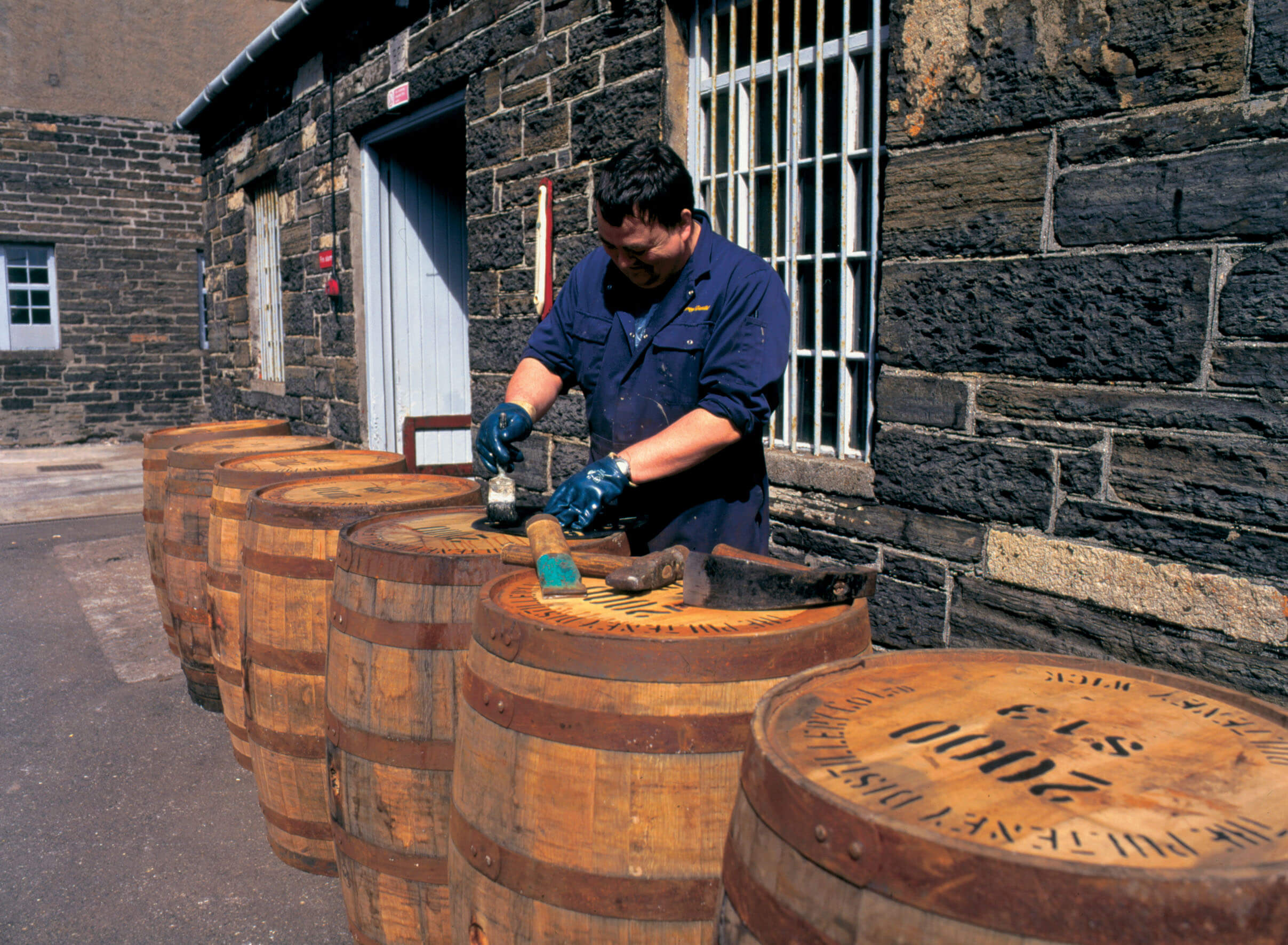Row to the Pole expedition keeps us on the edge of our seats
One year on we look back on Artic explorer Jock Wishart’s epic row to the Magnetic North Pole.
Read more
Love Old Pulteney and want to find out more about how we craft the fine single malt in your glass?
The nitty gritty of making Old Pulteney Single Malt Scotch Whisky
At Old Pulteney we love all our fans. Those who enjoy the occasional glass by the fire on a long winter’s night, never sparing it a second thought, and those dedicated individuals who relentlessly seek out ever more information about their favourite drink, the true aficionados.
It’s the latter, the enthusiasts, who often ask us questions so detailed it amazes us how much they know about the process. A lot of these questions relate to the whisky production process of course and the equipment we use. Here’s a quick run down of some of the key facts and figures relating to how me make the dram in your glass. Hope this helps those of you of a geeky disposition to fill the gaps and appreciate the complexity of the whisky making process just a little bit more. In any case, enjoy. Here’s Pulteney in a nutshell.
Twenty-four-inch, four-roll Porteus Mill and a Bhuler weighing machine.
The process water comes from Loch Hemprigs and it arrives by the longest lade in Scotland.
Our semi-lauter mash tun was designed by Forsyth. Built from stainless steel with a copper canopy, it’s 4.6m in diameter and will mash 5.1 tonnes of grist in the bottom 1.5m. The draff bed depth is 470mm. It produces a relatively clear wort at original gravity of around 1.065.
We have six washbacks and their working capacity is 23,500l. They are 3.9m high, 3.6m in diameter and built, unusually, of Corten steel. That’s what gives them their unique ‘rusty’ look. Long fermentation takes 104 hours and short 52 hours.
We have two uniquely-shaped stills. Both boast exaggerated boil balls and the wash still in particular is unusual with the lyne arm attached directly to the head of the still without the ‘swan neck’. Maximum capacity of the wash still is 21,707l and the spirit still can take 17,343l. The wash still is 5.2m high and and the spirit still is 6m. The lyne arm of the wash still is slightly descending, and the lyne arm of the spirit still takes the shape of an inverted ‘u’ and then it’s almost level past the purifier. Condensation takes place in traditional worms immersed in water in steel tubs. The copper worms are 108m for the wash still and 106m for the spirit still. Average spirit run time is 150 minutes and it flows at approximately 10.8 litres per minute. The average spirit vat strength is 68.8% ABV and the intermediate spirit receiver is made of stainless steel.
The new make spirit smells of cereal and leather, it’s also sulphury, estery and veggy. Full bodied.
Maximum capacity of the site is 1.8m litres of alcohol per year.
Around 60% of our maturation capacity on site is in dunnage warehouses, the rest is in racked warhouses, all built from local stone. Needless to say they are right here on the Caithness coast.
All that remains now is to exlore our collection of fine single malt whiskies! Click here to view the range .
To visit our website, you must be of an age at which the purchase and consumption of alcohol is permitted according to the legislation in your country of residence.
If there are no laws on this matter, then you must be at least 18 years old.
Terms and ConditionsAlcohol abuse is dangerous to your health.
Drink Responsibly.